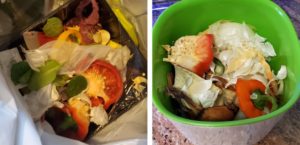Developing Waste-to-Value Projects Part 2: Technology
Once you have completed a feedstock evaluation and populated your feedstock matrix, the next step is to select the technologies available that will convert your feedstock into a valuable output or set of outputs. This could mean wood chips to wood pellets for energy, old tires for jet fuel and scrap metal, organic waste to electricity or renewable natural gas, etc.
Start to refine your options by filling out a “feedstock x products” pathway matrix (see
table below) that connects feedstocks and products with a technology pathway. Wood chips
become wood pellets through pelletization. Old tires become jet fuel through pyrolysis.
Organic waste becomes renewable natural gas through anaerobic digestion.
We must be careful in this phase as we often see development teams become overly ambitious with feedstock sourcing, believing there is a magic bullet technology that can handle all variations of waste. Despite the claims made by many technology providers, we do not see that work in practice. You must narrow down to those feedstocks that are most abundant and easily co-mingled and processed by a bankable single-process technology. Also, remember that if you plan to sign a 20-year feedstock supply agreement, your feedstock supplier must be credit-worthy enough for the investors to be convinced they will be around at the end of the term.
Once you have filled out your pathway matrix, you can start to rank the possible outcomes that combine the best energy content, product value, technological surety, bankability, logistical simplicity, and overall project economics.
There are a host of technologies that transform waste streams into valuable commodities and co-products, but there are several aspects to consider that extend beyond “what works”. Fundamental questions to be answered during the technology evaluation process, include:
- Which feedstocks are better suited for which thermo or chemical conversion pathways?
- Which feedstock/conversion pathway can produce the highest value outputs and co-products?
- What incentive support programs (LCFS, RIN, etc.) exist that could add value to your product? How much are they worth?
- What percent of your revenue is derived from a subsidy?
- Are there a series of successful operating facilities within each technology vertical to support underwriting?
- Is the technology provider able to stand behind the performance of its process?
- How much tolerance does each technology option allow for variability in feedstock?
- What design/CapEx/logistics changes can you make to your facility to increase value from a product or incentive program standpoint?
Once you have narrowed your technology pathway selection down to one or two viable candidates, you will be ready for the next step, the Front-End Loading (FEL) process. But for that, you will have to wait for part 3.
Read Developing Waste to Value Feedstock: Part 1 – Feedstock
- Establishing EPC Contracts Suitable for Today’s Sustainable Infrastructure Projects - March 4, 2022
- Understanding The EPC Contract: Pricing - October 14, 2021
- Nexus PMG Announces Strategic Reorganization to Satisfy Demand for Construction Monitoring - June 24, 2021


